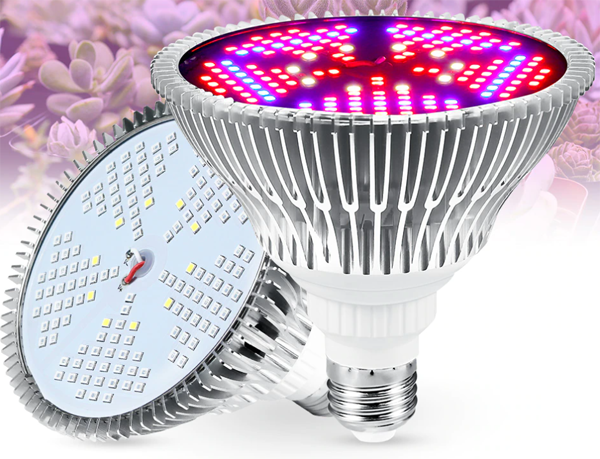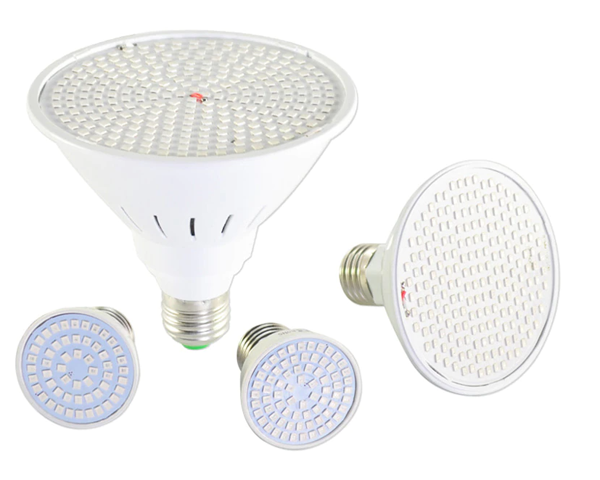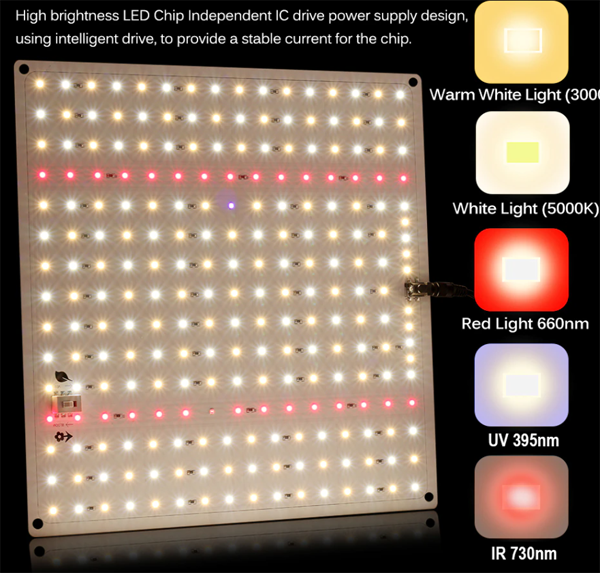Lights
This is the area of permanent holly wars, as there are few types of lamps and few types of spectral characteristics. Simply put, if you take chlorophyll, its spectrum has two absorbance bands: red and blue, while green is not absorbed. So why don't we use red and blue light diodes and save on electricity?
Three reasons.
First, you are going to live with these lights. Some time ago, in the beginning of 20th century, Ford tried to introduce monichromatic lights on his factories. Consicering althernatives they had at that time, it would give a huge economy. Result? He got one of the most intense strikes ever: people simply refused to work in such an environment.
Our state of mind strongly depends on the lighting, so think about it.
Second, there are some complaints on the TEST of the vegetables grown under such lights. Then again, there are reports that one can grow perfect vegetables under red-blue lights...
Third, and probably, the most important. in addition to chlorophyll, plants have other pigments, they can absorb green light and pass the energy to chlorophyll. So not all green light is going to be lost.
Which lamps to choose also depends on the area you want to hilight. I prefer rectangular panels, one panel is enought for approx. 70x70 cm area (or even more, depending on a plant). But there are also LED bands that you can glue to metal (for example, to the stillage) to get rid of generated heat; There are fluorescent tubes and sodium lamps (not recommended for appartment, but very good for a large greenhouse).
What you have to pay attention to? First of all, the power. There is such thing as power of a lamp, and also the equivalent power. Power is what it consumes. Equivalent power is what an incandescent lamp would consume to provide this much light. Obviously, the equivalent power is a promotion trick.
However, regardless their efficiency, LED lamps still produce heat. Also, LEDs degrade, the higher the temperature, the faster. So if you see two lamps, one with plastic case, another one in an aluminum one plus it has radiator, take the second one, even if it is more expensive. Same with LED panels: LEDs are glued to aluminum surface for a reason, don't place it close to the wall, you'll cut off the heat exchange.



You can not just turn on lights forever: the plant requires dark period. For different plants the optimal duration of a light day is different, but not very different; you will need one, maximum two timers like this:

This is a clock that runs on the outlet power (make sure they don't lag behind when power is off). You can set "on" and "off" periods with 15 minutes step.
You can power up an electric extender from it and plug in few lamps: they have power consumption at around 60W, so you will not overload your outlet. However, let me repeat that this text is not a tutorial on electric circuits, if you burn your house, it is your fault.
If your plants do not see the daylight, you can turn off the lights in the night, using cheaper night time power (if you have one). Of course, you wouldn't be able to use night prices for 14-16 hours, but it is definitely a good idea to use it. For example, my timer turns lights on at 22:00 and off at 13:30, it is convenient for me and uses cheaper 23:00 to 7:00 prices.
Additionally, you can install an accumulator to charge it at night and discharge during the day, but you will have to figure it out yourself. Particularly, one need to account for efficiency of charging - discharging cycle and for power price difference. Most likely, this approach is excessive in case of an appartment, but might be profitable in case of a small farm.